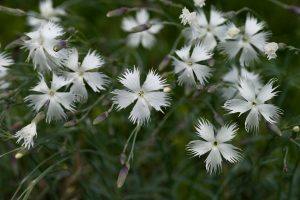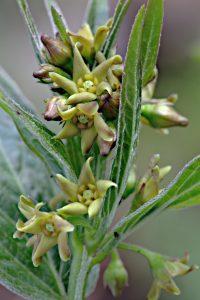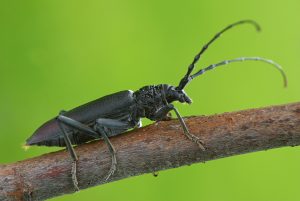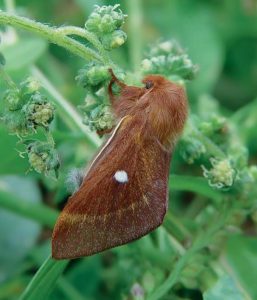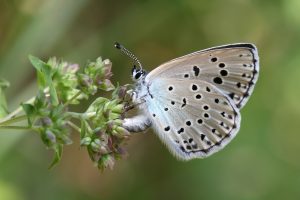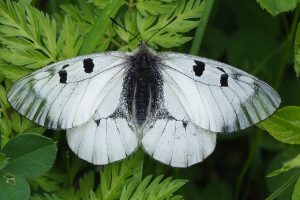We restore flowering sides
The LIFE endemic PANALP project is focused on the restoration of drought-loving grassland communities, which are currently threatened by encroaching trees, invasive species and the planting of non-native trees. The restoration of these biotopes takes place by appropriate removal of woody plants and subsequently by the restoration of sustainable traditional management (grazing and mowing), which has been missing here for several decades. This brings benefits not only for the target habitats and species, but also for local farmers, with whom we cooperate in the restoration of management. In Slovakia, the project is taking place in 17 areas of special conservation interest located in western part of the country from the Small Carpathians to the Strážovské vrchy, in Hungary in another 7 areas. The goal of the project in Slovakia is also to improve the status of populations and habitats of rare species of European importance. Among the plants, the endemic taxa are Lumnitzer’s clove (Dianthus praecox subsp. lumnitzeri) and the highly endangered moravian tephroseris (Tephroseris longifolia subsp. moravica). The target species of invertebrates are the great capricorn beetle (Cerambyx cerdo), the eastern eggar (Eriogaster catax), the large blue (Maculinea arion), the mountain apollo (Parnassius apollo) and the clouded apollo (Parnassius mnemosyne). In Hungary, the targets are rare endemic plants – the Sadler’s ferula (Ferula sadleriana), the dolomite flax (Linum dolomiticum), the pannonian nutmeg (Vincetoxicum pannonicum) and the continental steppe species of crambe (Crambe tataria).
The partners of the project are the State Nature Protection of the Slovak Republic, for locations in Hungary the Duna–Ipoly National Park Administration and the Pilisi Parkerdő Forest Administration.
We thank the administrations of the Ponitrie PLA, the Biele Karpaty PLA, the Malé Karpaty PLA, the Strážovské vrchy PLA, the Záhorie PLA, the Duna–Ipoly National Park Administration, the Pilisi Parkerdő Forest Administration and the local farmers, foresters and landowners for their help with the implementation of the project.
For more information about project species, habitats, but also methods of their restoration, or for navigation in your own efforts in similar locations, you can consult our colleagues:
Mário Duchoň, duchon@broz.sk, tel. number: +421 915 165 677
Pavol Littera, littera@broz.sk, tel. number: +421 948 177 555
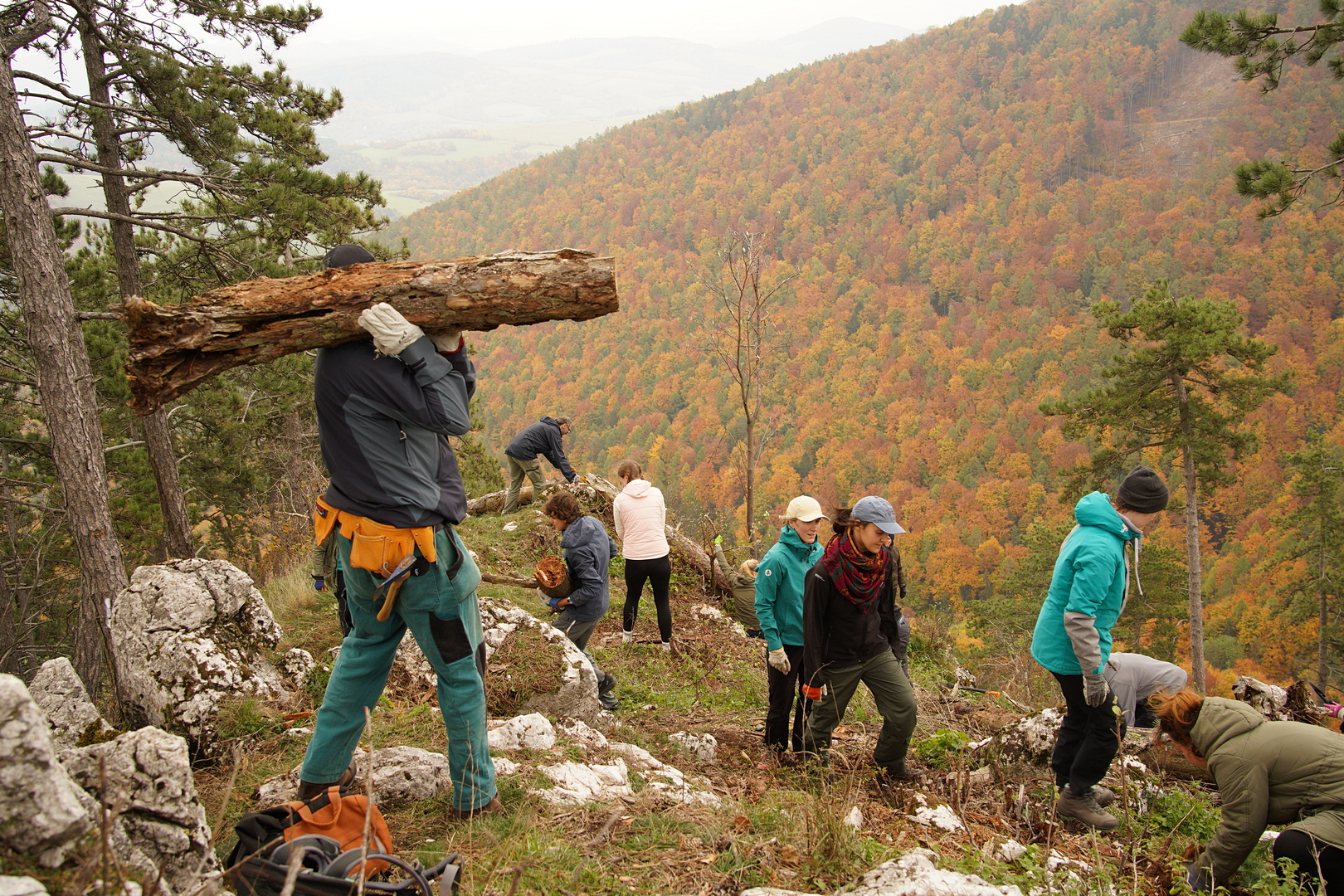
The Czechoslovak conservation weekend in White Carpathians contributed to saving the rocky steppes
Although we do not commemorate October 28 as a national holiday in Slovakia, the legacy of the first common republic is still alive for many of us. This also applies to Czech conservationists from the JARO Group or scientists from the Faculty of Natural Sciences of Charles University. They decided to spend their extended October…

We restored grazing under the second largest peak of White Carpathians
As part of the LIFE Endemic Panalp project, we are successfully continuing the restoration of flowering meadows and traditional pastures. Most recently, thanks to the project, after many decades, farm animals are grazing again in the saddle below Chmeľová, which is the second highest peak of the White Carpathians. It is interesting that a very…

We hosted a restoration camp in Smolenice
During the last week of August, we hosted an international youth camp at Molpír near Smolenice village in Small Carpathians. It was organized by the association Strom života (Tree of Life) and almost 30 young people from Slovakia, Finland, the Netherlands and Greece came to it. With our joint efforts, we managed to clean more…

We hosted a restoration camp in Smolenice.
During the last week of August we hosted an international youth camp on the Molpír hill near Smolenice. It was organized by the Tree of Life association and nearly 30 young people from Slovakia, Finland, the Netherlands and Greece came to participate. Together we managed to clear more than a kilometre of corridor, where we…

Rare plant species are returning to the restored hillsides
Our project LIFE Endemic Panalp, aimed at the protection of several endemic species and habitats of dry grasslands, has recently moved into the second half. So, what did we achieve during the first one? First of all, in the Strážovské vrchy, Považské Inovec, Malé and Biely Karpaty, we restored a total of more than 80…
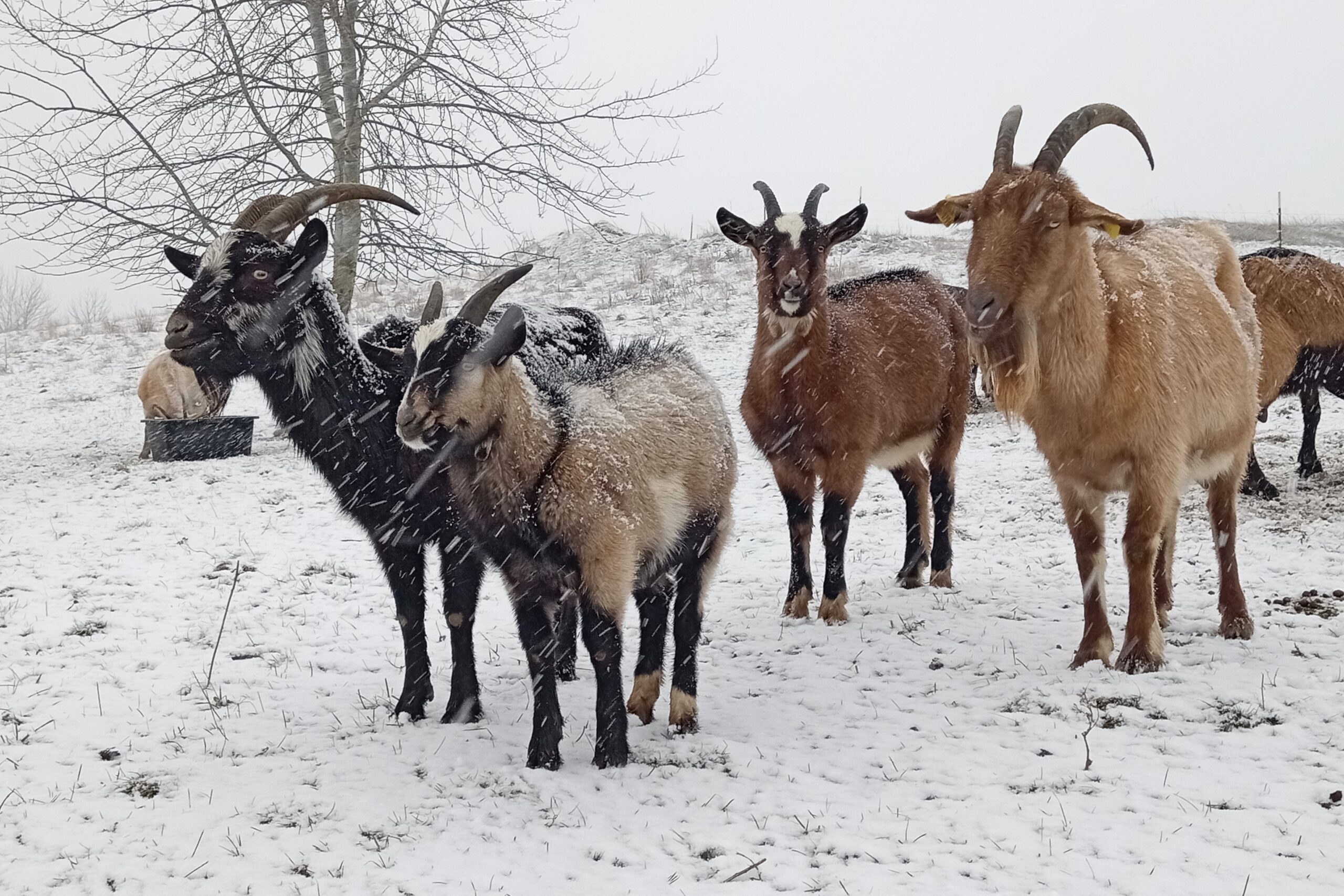
We implement winter and early spring grazing. What are its benefits?
If you are looking for a blossoming cherry in May (at least here in Slovakia), you will find it in the White Carpathians in the protected area Vršatské bradlá. And with it also living mowers – a herd of goats and a few sheep. Grazing started exceptionally here already in April in two reserved plots.…
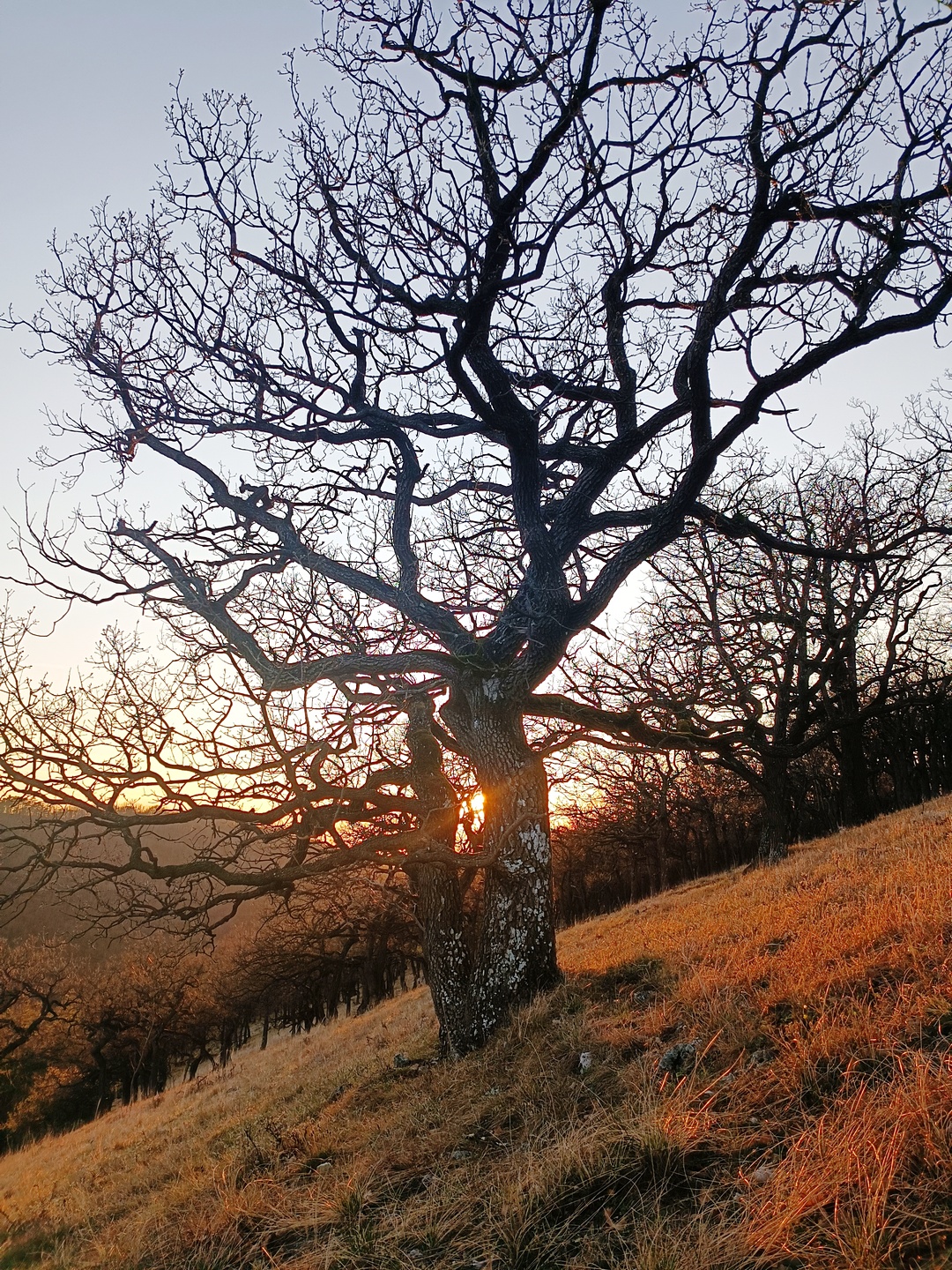
We are restoring the forest steppe near Plavecký Peter
In the middle of the forests around Plavecký Peter village in the Small Carpathians, you can find the remains of rare grassland areas on stony slopes with beautiful solitaries of oaks, interspersed here and there with viburnums or hawthorns. In many places, however, this original beauty was literally swallowed up by artificially planted non-native black…

The voluntary weekend (not only) for the mountain apollo turned out great!
The team of the LIFE Panalp project spent the third Saturday of March on the cliffs of Vršatské bradlá protected area. Here we were joined by approximately 30 volunteers who wanted to help us to save one of our most endangered butterflies – the mountain apollo. Together, we managed to clear the sawed-off branches on…
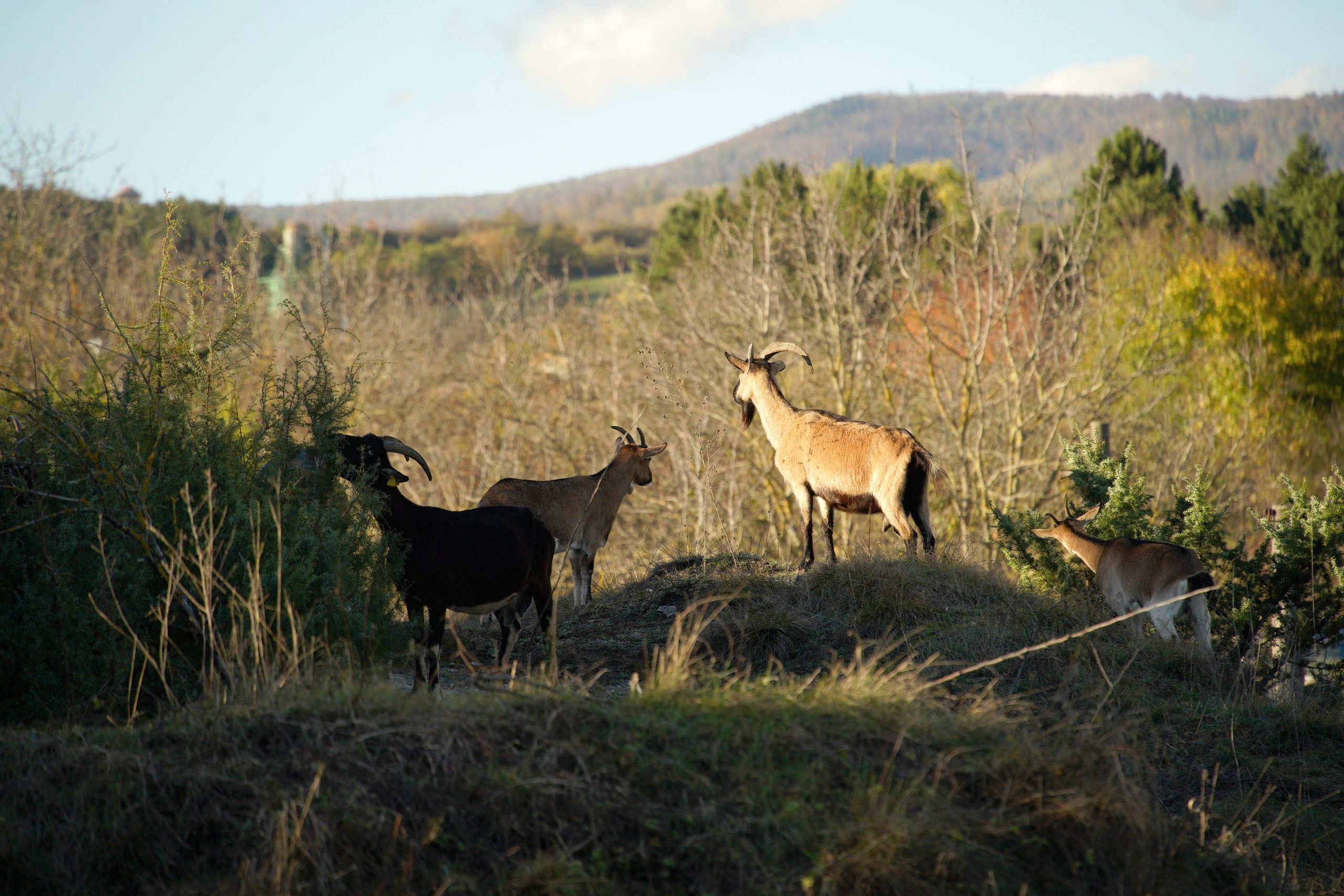
Together with a local shepherdess, we take care of the protected area near Topoľčany
One of the more than a hundred locations where we have restored grazing so far is the Dolné lazy protected area. It is located at the southeastern foothills of Považský Inovec above the small village of Závada. It consists of famous orchid meadows with a lot of junipers, which gradually disappeared in the shade of…
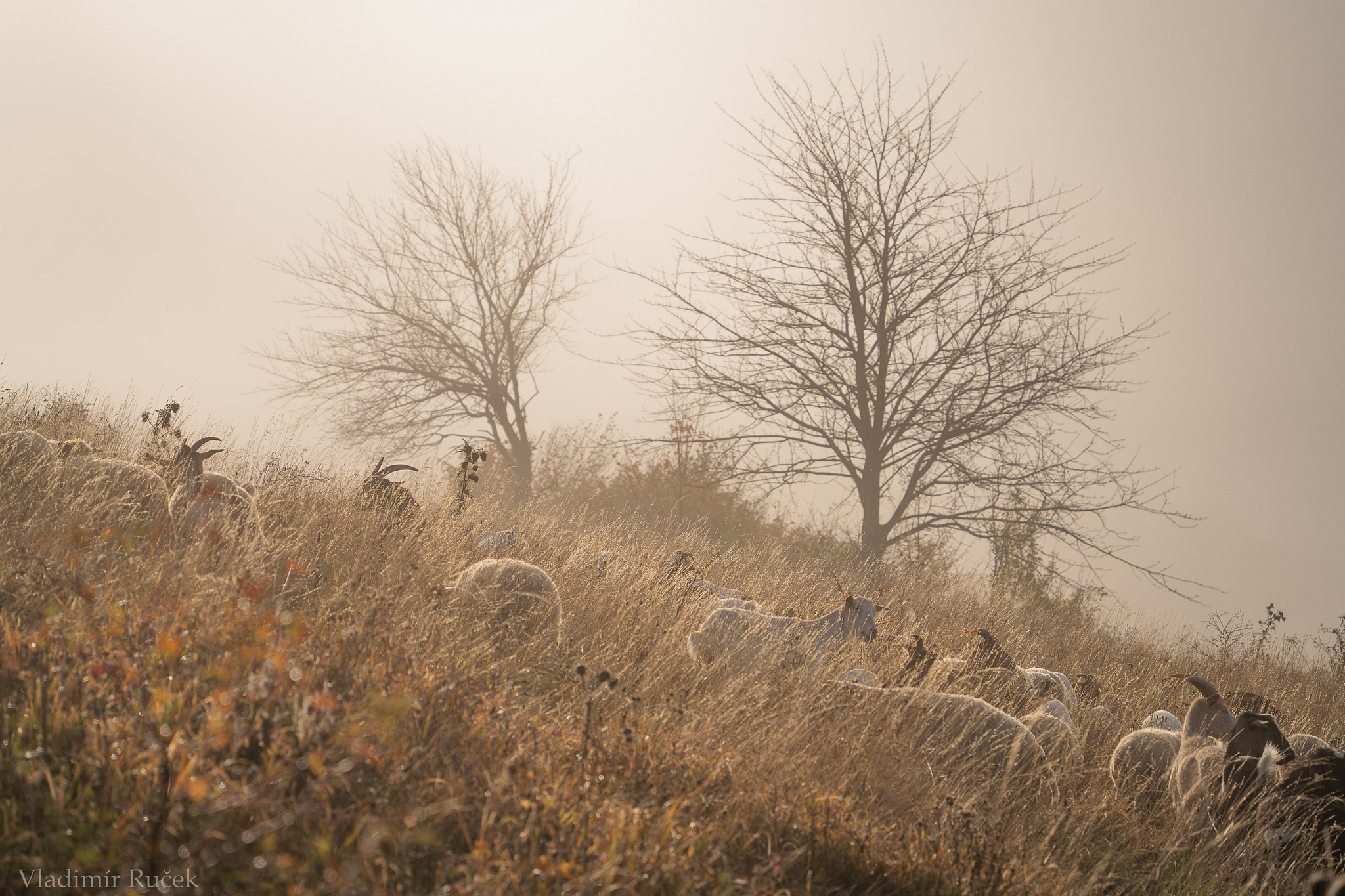
Together with local farmers, we are successfully restoring grazing in Zliechov
Our LIFE Endemic PANALP project is approaching its halfway point, and we are very happy that we are succeeding in fulfilling one of its main goals – the restoration of traditional grazing on rare drought-loving grassland habitats in the Small and White Carpathians and the Strážovské vrchy. In the last-named mountain range we have returned…

We are restoring pastures and flowering hillsides on the prehistoric Molpír hillfort
The last Thursday of September was spent by the team from our LIFE Panalp project in Smolenice, where Toyota employees and we prepared the ground for the restoration of grazing on the Molpír hillfort. Together, we managed to peel the bark off the stakes along the entire route of the fence, install insulators on them…
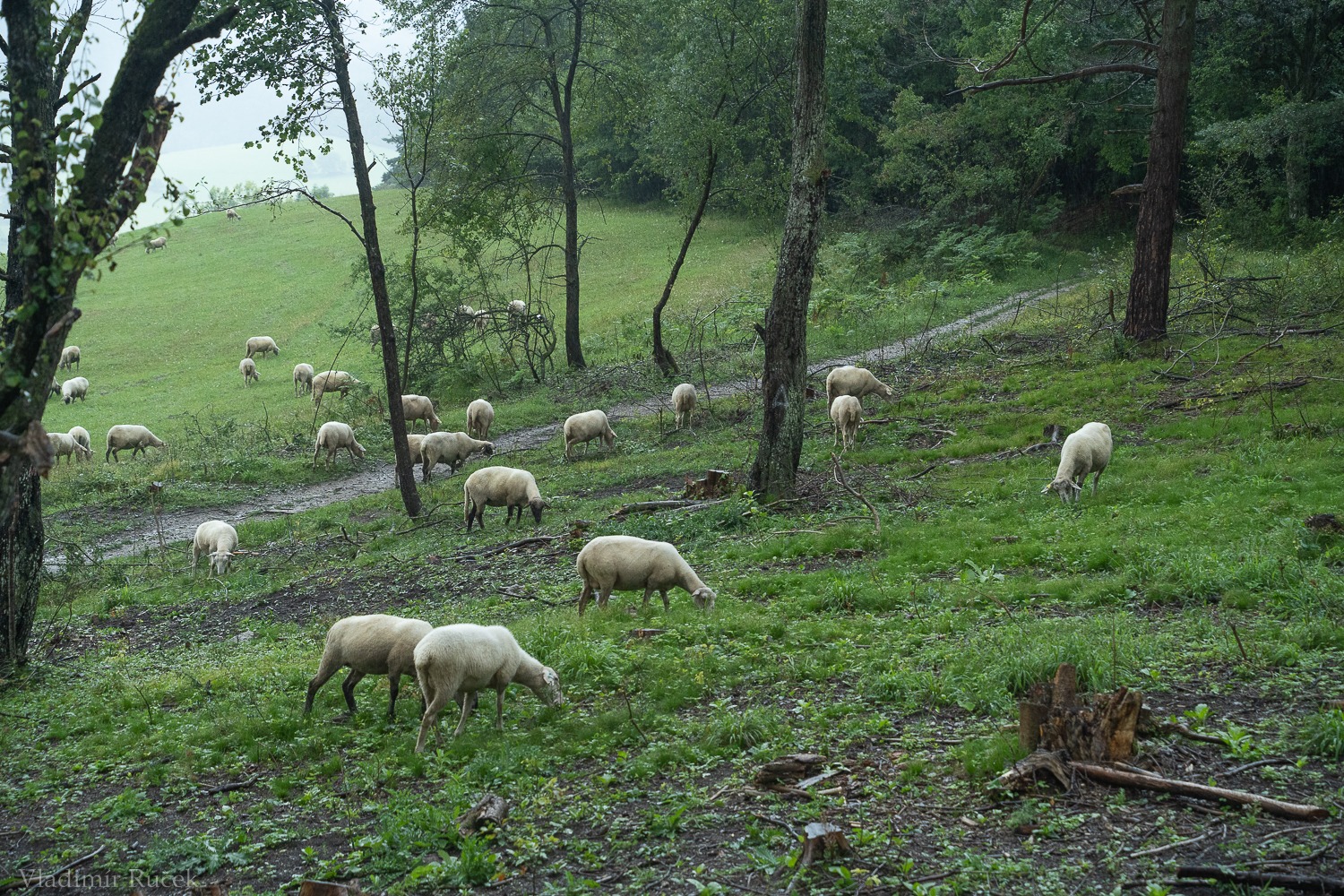
Restoration of pasture habitats in Súľov
The Súľov hills are famous not only because of picturesque sceneries of rock gates and towers, but also because of a wealth of rare flora and fauna. Among other things, they were known among botanists in the past as a famous botanical site.
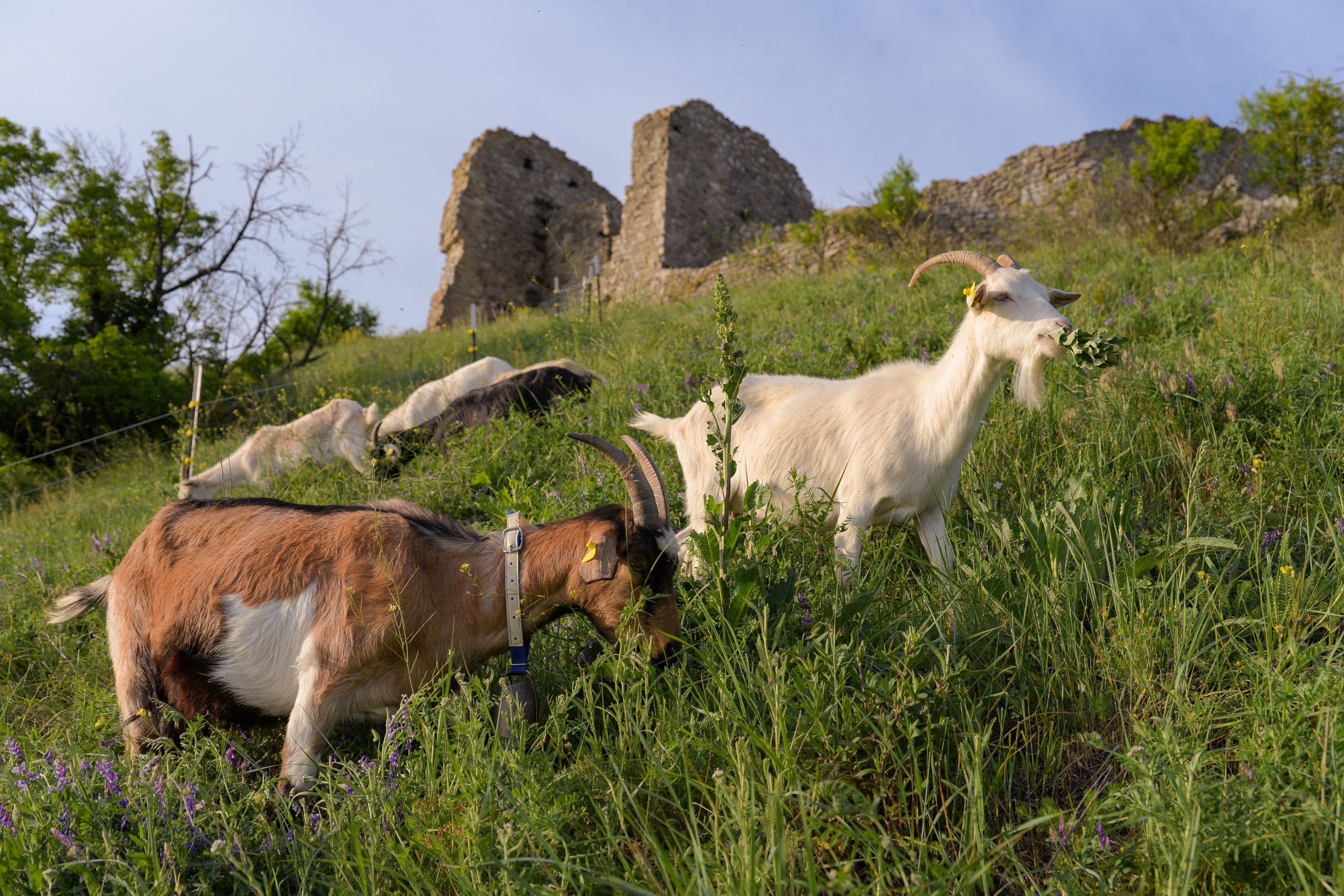
When grazing is succesfull
For several years now, we have successfully grazed sheep and donkeys at Devín Castle, and this year we managed to expand the pasture to the Devín castle Rock - which is located in the southern part, directly under the walls.
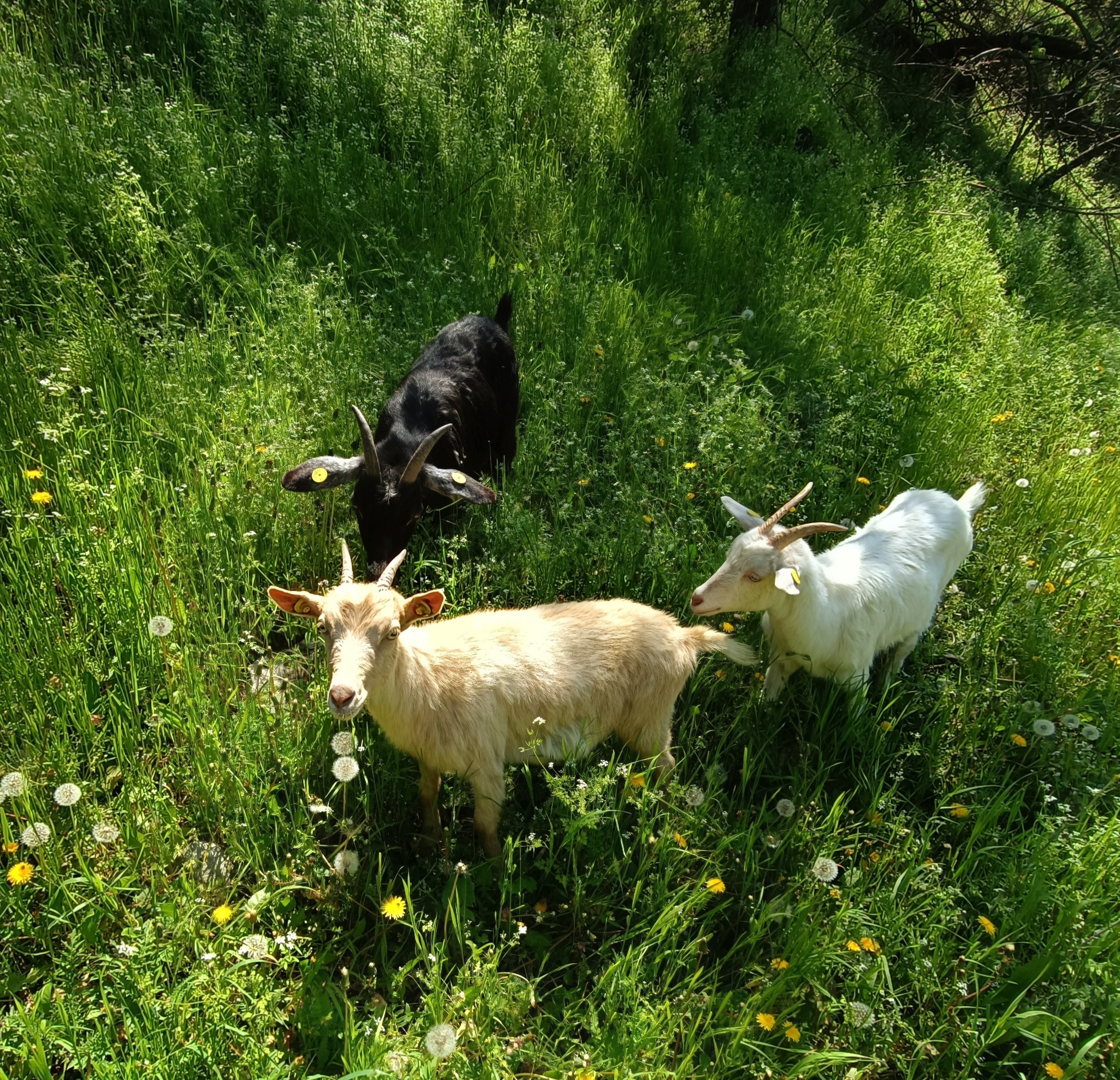
Goat grazing on the Devín castle rock
In addition to the successful activities in the Strážovské vrchy, as part of the LIFE Panalp project, we also started to restore rare grass habitats in the Samll Carpathians. In the westernmost Slovak mountain range, this spring, in cooperation with the Museum of the City of Bratislava, we started grazing on the Devín Castle Rock.
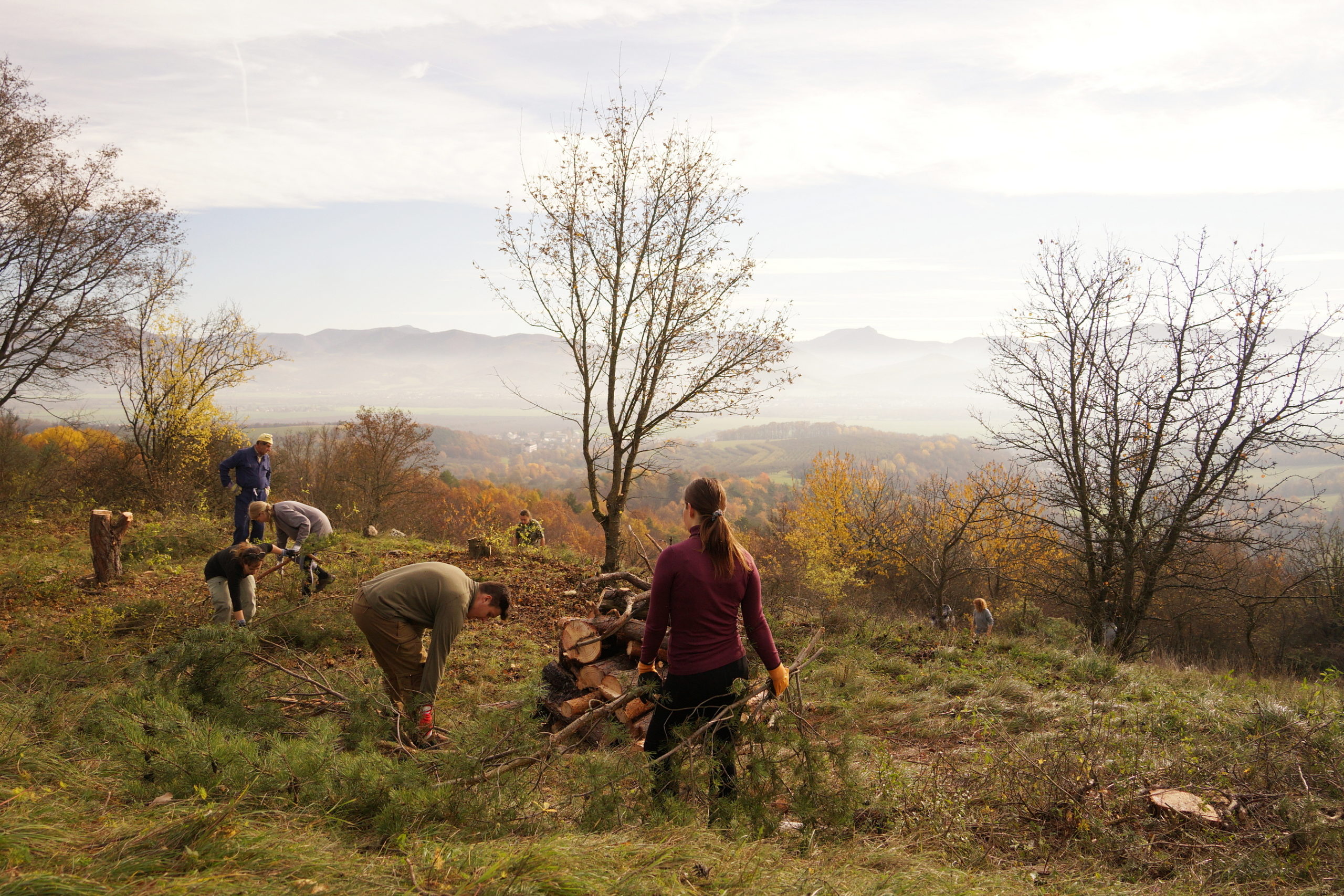
We have taken a small step for humanity in the White Carpathians, but a big step for nature
Grazing restoration is one of the golas of the project LIFE Panalp, from which the weekend activity was financially supported. In White Carpathians we are grazing goats in more localities already so we started now also in Babiná and we hope that the butterfly king will be atracted back to the locality.

We started grazing on Krasín hill
Krasín hill starts to look like it used to, thanks to our grazing restoration.
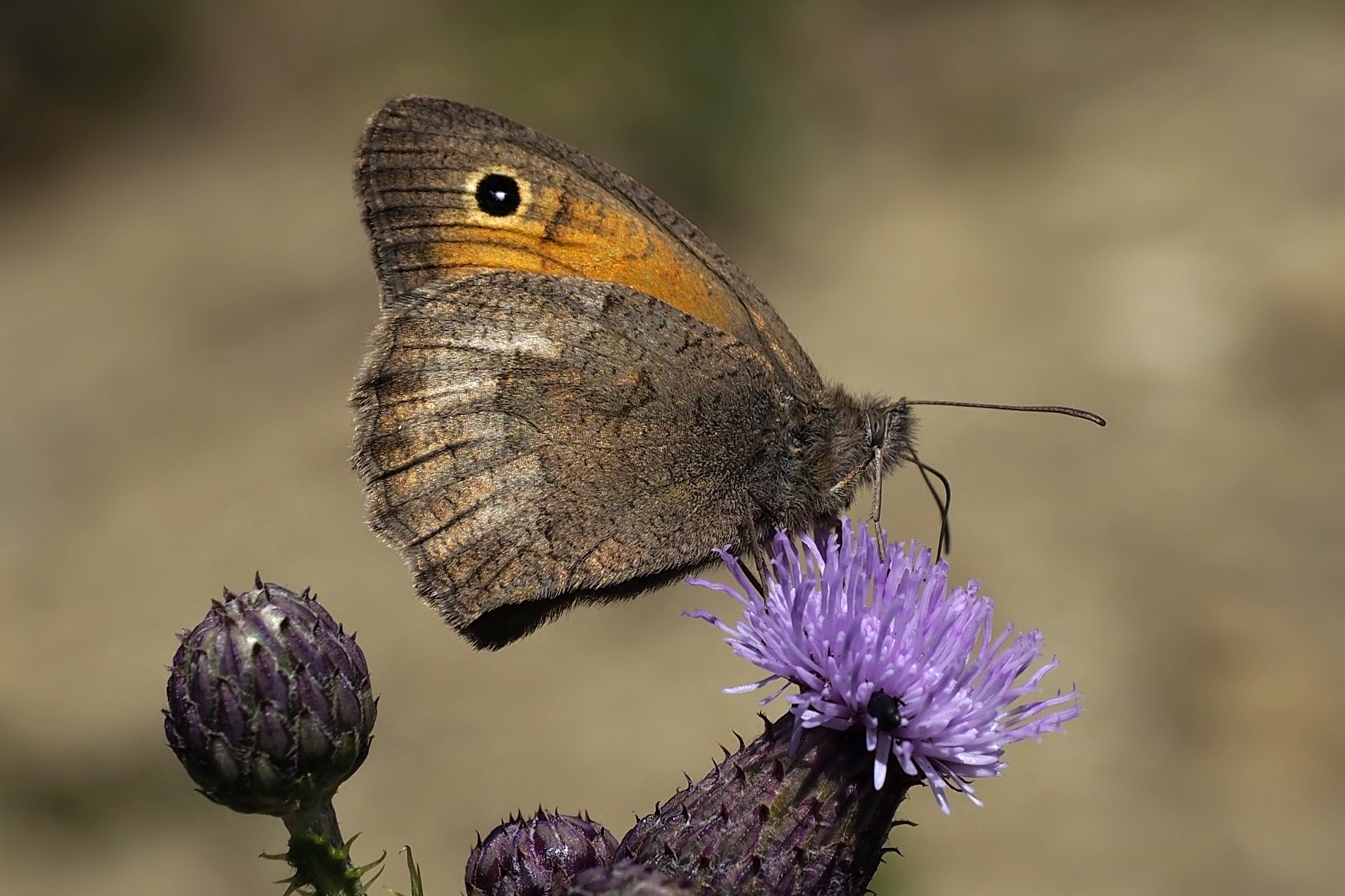
Dry-lovers or who likes the dry?
There are habitats which can stand dry weather much better than others. We call them drough-loving habitats or xerotherms.

Beauties of diverse landscape
The Slovak mountains hide small treasures, which many have no idea that they exist in our country. They are wild orchids, and it is the Strážovské and Súľovské vrchy that can boast one of the highest species diversity in Central Europe.
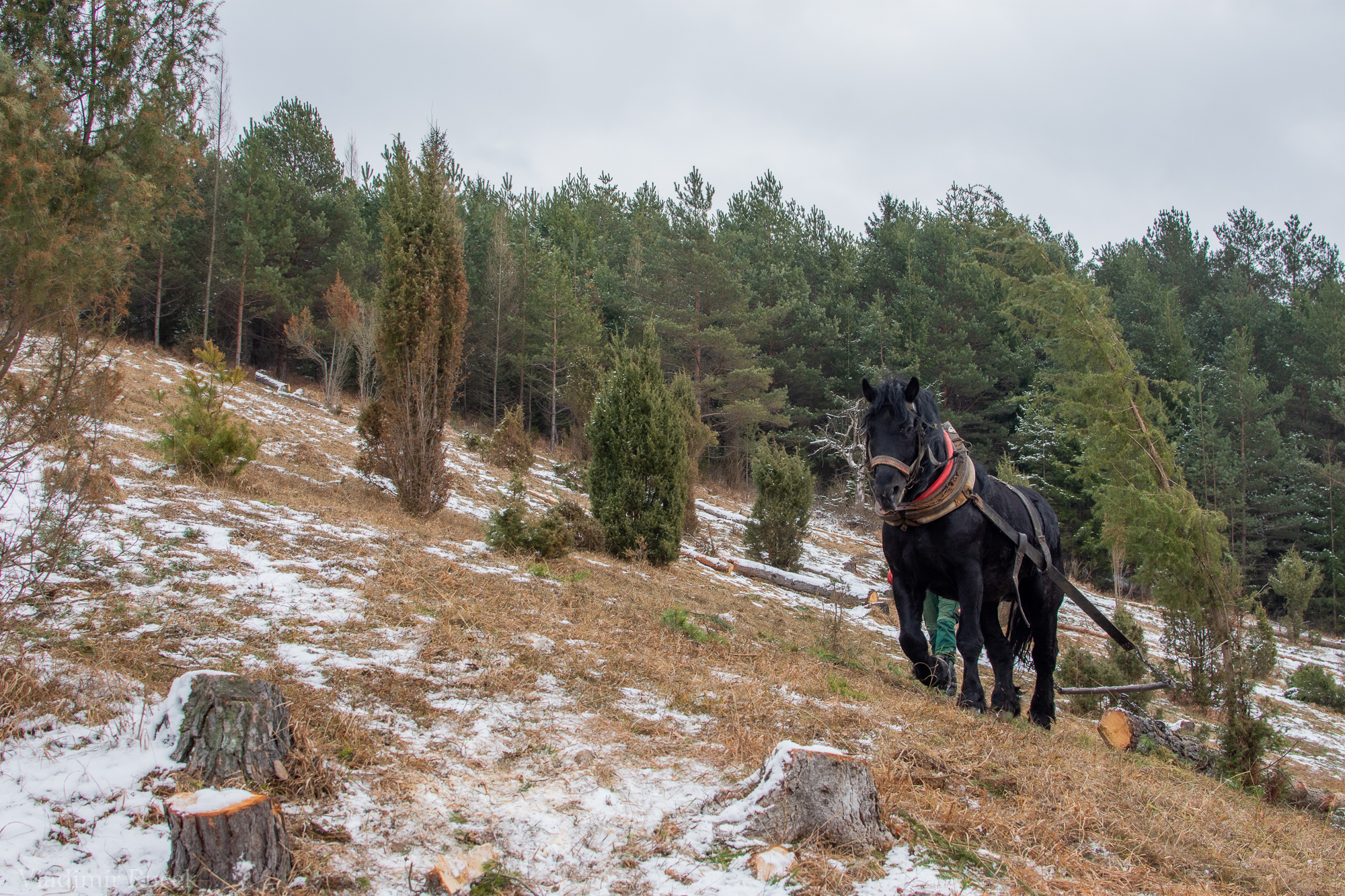
Restoration of Svarkovica protected area in cooperation with PLA Strážovské vrchy administration
Pine trees and spruce trees gradually overgrew even the territory of Svarkovica prtected area. The shading and acid fallout of needles increasingly changed the ecological factors of the environment, and without human intervention, the rare habitat and the species bound to it would gradually disappear even from this hotspot of biodiversity.
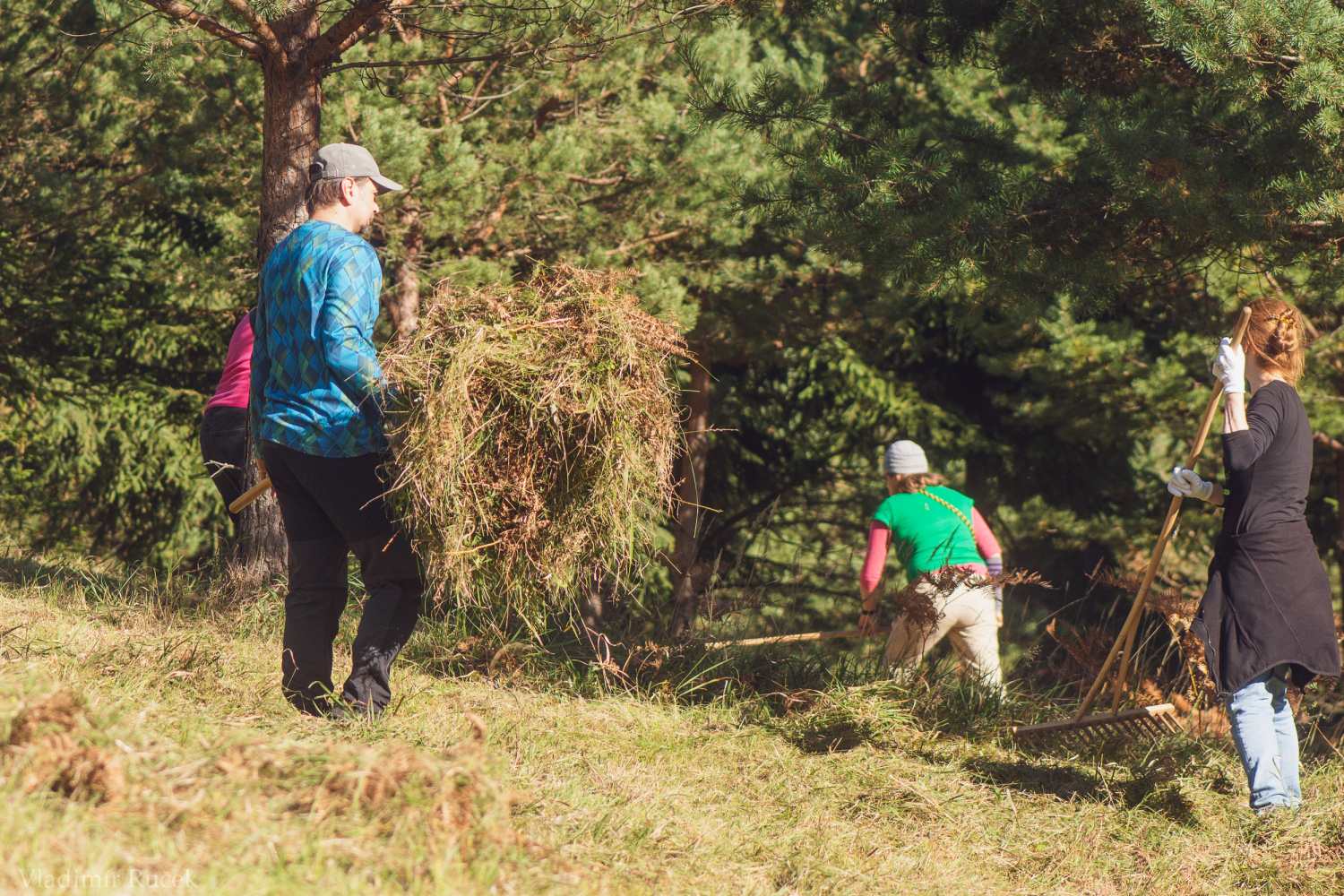
Working with volunteers to clean up sites
One of the goals of the LIFE PANALP project is the involvement of volunteers in nature conservation. In this way, event participants will not only help nature, but also learn a lot about active care of target habitats and species. Information thus reaches the public through the experiences of individuals. We have therefore organized several brigades in autumn 2021.

At the location in Strážovské vrchy, we helped a mountain Apollo butterfly (Parnasius apollo)
At the site of the maountain Apollo, one of our rarest butterflies, we cleared approximately 1 hectare of debris from invasive trees. Since this light-loving species of butterfly requires sufficient space with nutritious and nectar-producing plants. We believe that this intervention will greatly help the maintenance of this species in the territory and, among other things, will also support other species of rare plants and insects.

Saving habitats with current and former DINPD staff
On 23 October 2021, an enthusiastic team of current and former DINPD staff members and their relatives devoted their Saturday morning to hands-on nature conservation at the Szársomlyó site of the LIFE endemic PANALP project. They cut down overgrown bushes and smaller trees on the most Southern habitat of the rare and vulnerable Vincetoxicum pannonicum.
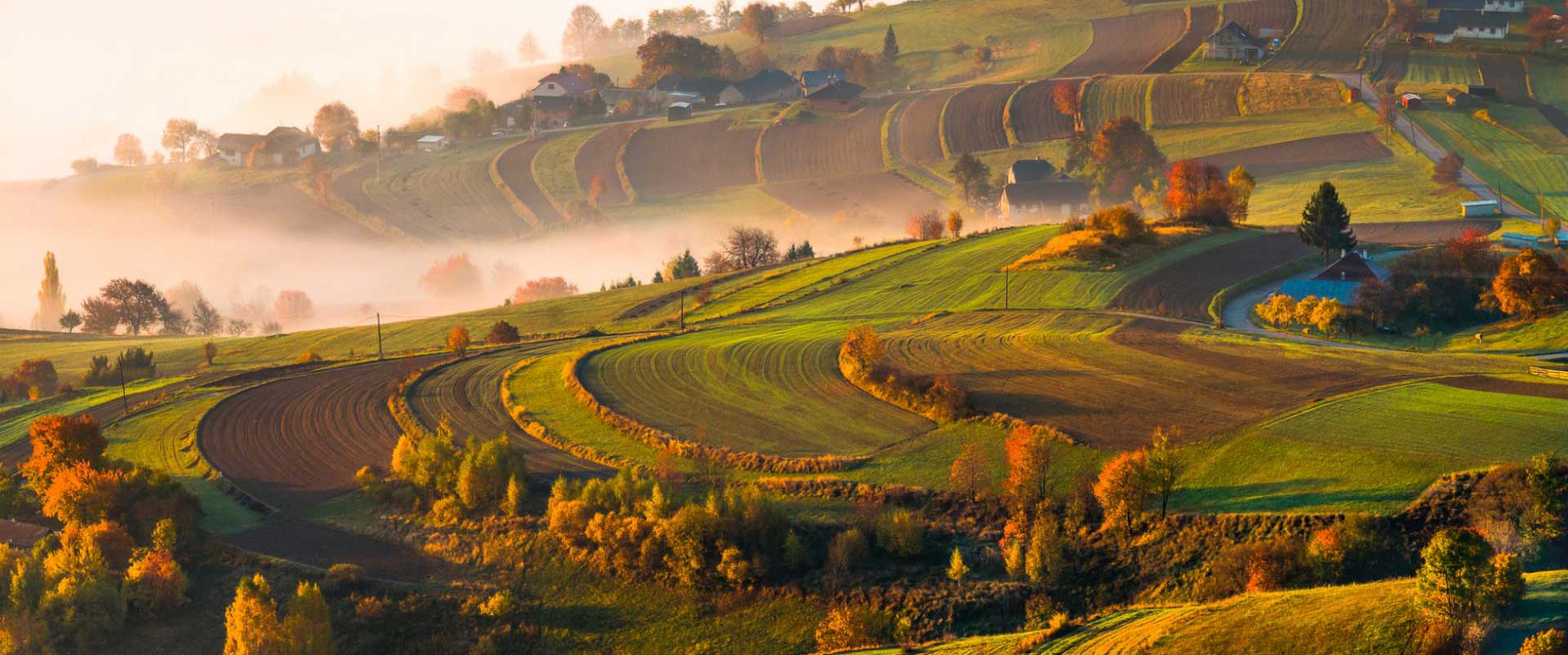
Sign the Living Country Petition
Intensive farming on large areas literally erased life from the country. This is largely due to a poorly designed agricultural policy that encourages intensive farming, which creates a huge burden on the environment. Variety disappears from the rural landscape and with it also birdsong, butterflies and pollinators. If we lose the natural diversity of the landscape, we will also lose its health and resilience.
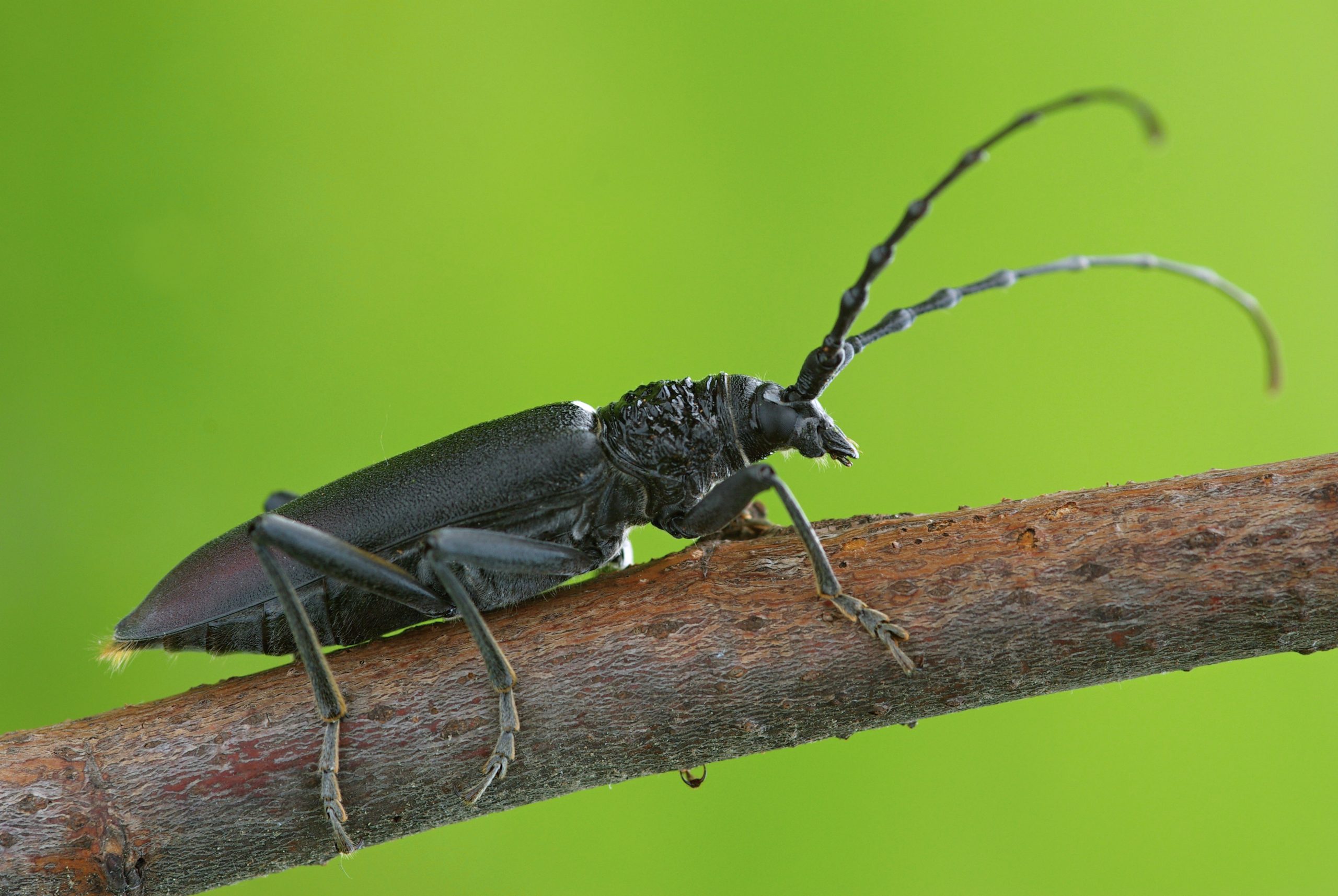
An international project is focusing on the return of pasture
The international project LIFE PANALP is focusing on the return of grazing as a tool for nature protection. Together with its Hungarian partners, the Regional Association for Nature Conservation and Sustainable Development (BROZ) will focus on the protection of several species of endemic plants and rare animals.
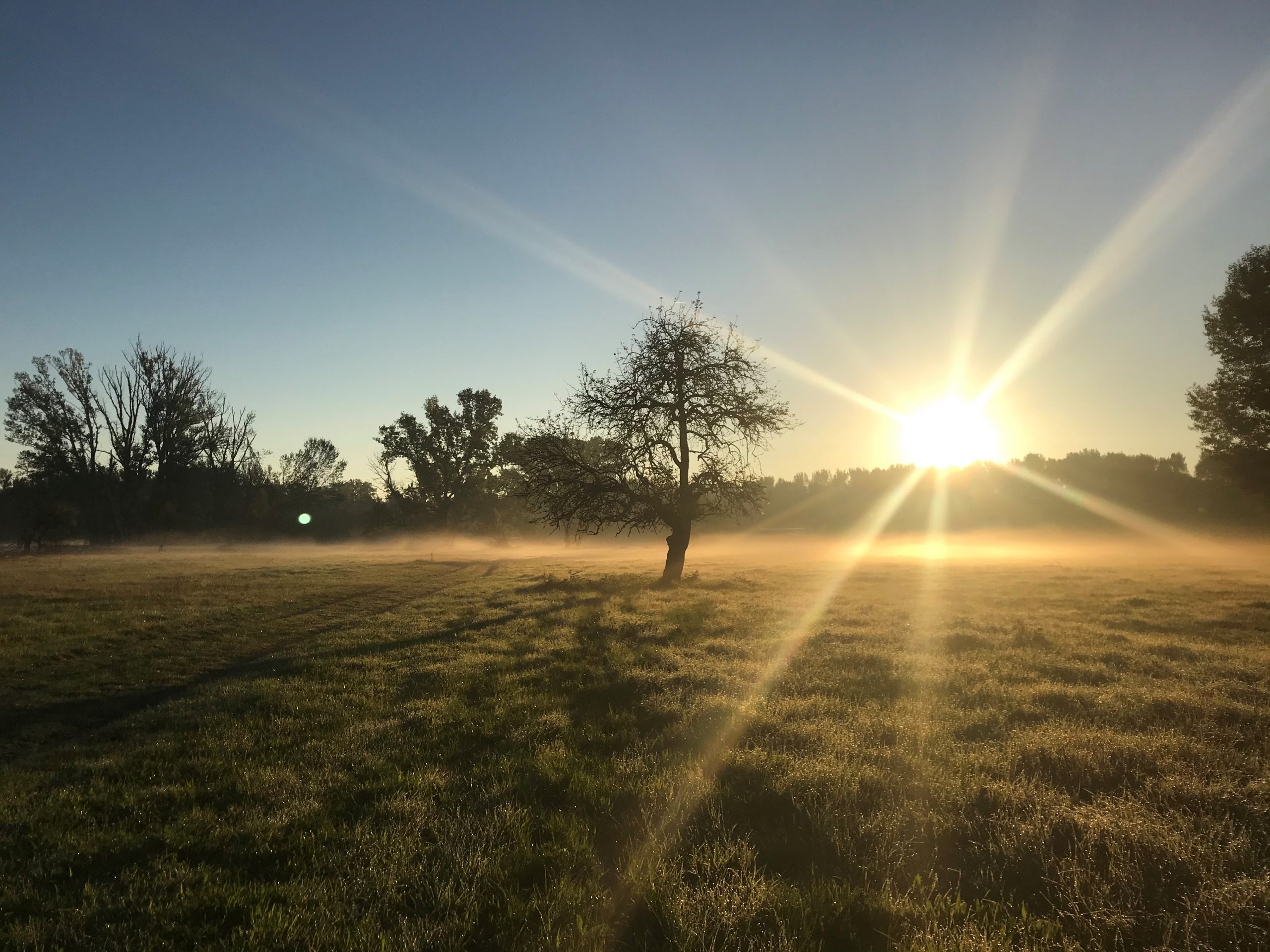
Conservationists, hunters and farmers are calling for landscaping
Conservationists, hunters, farmers, beekeepers and non-state forest owners are calling for landscaping for nature and people. In the memorandum "For a Healthy Country", they appeal to the Government of the Slovak Republic and the Ministry of Agriculture and Rural Development of the Slovak Republic appeal.
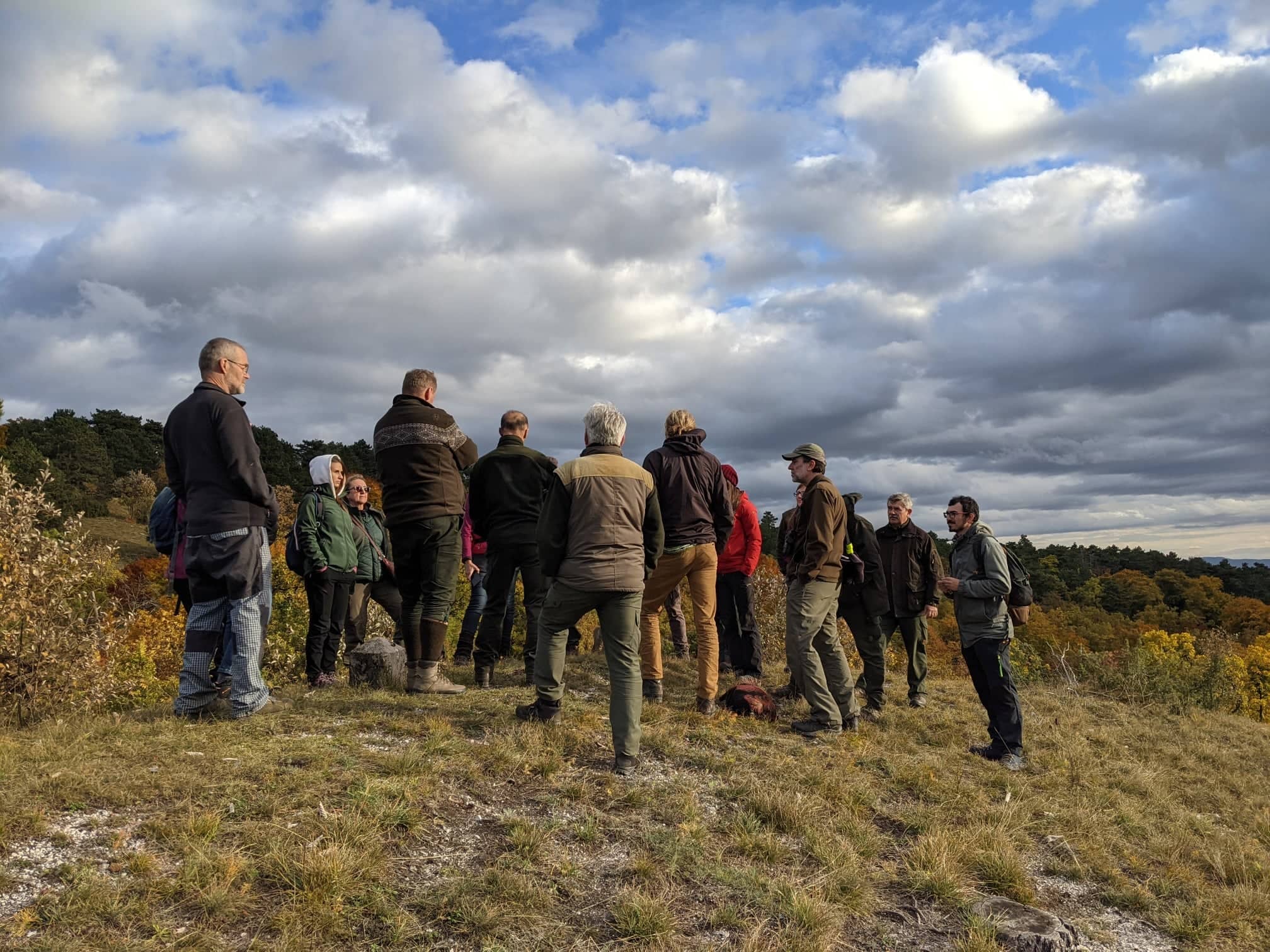
We organized a forestry excursion
At the end of last week, within the LIFE endemic PANALP project, we prepared a two-day field trip to the Duchonka forest administration, where we invited employees of the State Nature Conservancy of the Slovak Republic from the Záhorie Protected Landscape Area, Small Carpathians Protected Landscape Area, Ponitrie Protected Landscape Area and foresters from Lesy SR .
Project title: Conservation of endemic species and dry grassland habitats in the contact zone of Pannonian and Alpine bioregions
Project scheme: LIFE+, Nature and Biodiversity
Project acronym: LIFE endemic PANALP
Project code: LIFE19 NAT/SK/000895
Duration: 01/09/2020 – 28/02/2027
Budget: 5,279,511 Euro (75 % EU financial contribution)
Project focus: The main goal of the project is to improve the status of 3 priority habitats of European importance, 6 species of plants of European importance (of which 5 endemic) and 5 species of insects of European importance at 17 sites of the NATURA 2000 network in Slovakia and 7 sites in Hungary. At present, the project sites are threatened by overgrown trees and expansive grasses, as well as plantings and the spontaneous spread of non-native species, due to the abandonment of traditional management. Target species populations are often small and fragmented.
Through appropriate management measures, the project will significantly contribute to the construction of the NATURA 2000 network in Slovakia, to the improvement of its functionality and the preservation of the natural heritage of the regions of Slovakia. In addition to improving the condition of the habitats in question, the aim of the project is to ensure sustainable care for the restored areas and to restore ecosystem services. A substantial part of the project’s activities will be implemented in cooperation with local farmers and communities, which will also bring significant socio-economic benefits and contribute to job creation in the regions.
Specific goals:
- Restoration of grassland habitats 6210 *, 6240 * (in Hungary also habitat 6190) and securing of long-term care for them
- Improving the state of habitats and populations of Dianthus praecox lumnitzeri in Slovakia
- Improving the state of habitats and populations of Tephroseris longifolia moravica in Slovakia
- Improving the habitat and population of Crambe tataria in Hungary
- Improving the state of Ferula sadleriana habitats and populations in Hungary
- Improving the status of habitats and populations of Linum dolomiticum in Hungary
- Improving the state of Vincetoxicum pannonicum habitats and populations in Hungary
- Improvement of habitats and invertebrate populations Cerambyx cerdo, Eriogaster catax, Maculinea arion, Parnassius mnemosyne and Parnassius apollo in Slovakia
Crambe tataria
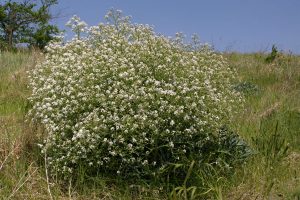
Steppe species, so-called “Steppe runner” reaching the western edge of its area in Pannonia. Endangered due to the decline of traditional management and overgrown sites. Target species in Hungary.
Dianthus praecox subsp. lumnitzeri

(c) Marián Mokráň
Endemic species widespread on rocky steppes on limestones, dolomites and volcanics in western Pannonia and in the foothills of the Carpathians. It is endangered especially by overgrowing of localities and the plantings of non-native trees. Target species in Slovakia.
Ferula sadleriana
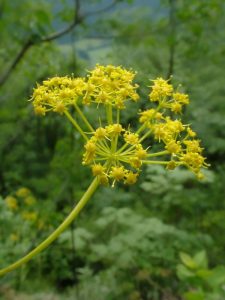
(c) Róbert Šuvada
Pannonian endemic and relict, one of the rarest plants in Europe. The locality is threatened by mass tourism and the bite of numerous mouflons. The project covers 90% of the species’ population. Target species in Hungary.
Linum dolomiticum
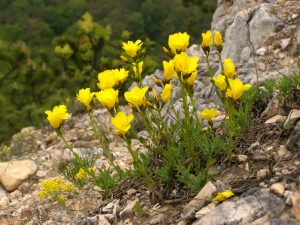
Endemic and pre-glacial relic with a limited occurrence of about 140 ha in the Szénás hills in Hungary. There has been recorded a downward trend in population size. The locality is threatened by trampling by visitors, damage by game and overgrowth by non-native black pine.
Tephroseris longifolia subsp. moravica
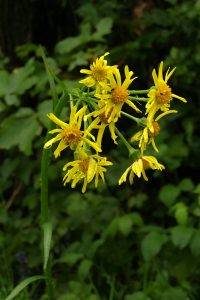
West Carpathian endemic with a small area and link to mowed meadows and forest edges, usually in steep or other not so accessible localities. Populations are declining and are threatened by the extinction of traditional farming, overgrowing of sites with woods, and partly by animal bites.
Vincetoxicum pannonicum

(c) Bérces Sándor
Pannonian endemic, the project will cover all of its sites in the three territories of European importance in Hungary. It is endangered by visitors, motorcyclists and overgrown sites with non-native black pine.
Great capricorn beetle – Cerambyx cerdo

(c) Ivan Klučiar
A species tied to old solitary dazzled oaks. Its habitats are disappearing due to the overgrowth of former pastures and the planting of non-native tree species (black pine). One of our biggest bugs. Males have very long tentacles – their length is greater than the rest of the body.
Eastern eggar – Eriogaster catax

(c) Martin Jagelka
A species tied to a sparsely bushy slope and forest edges in lower, warm locations. It is especially threatened by overgrowing of localities due to the abandonment of grazing. Adult butterflies are active at night, but their presence can be detected by typical larval nests. Larvae are most common on sloes, hawthorns and wild pears.
Large blue – Maculinea arion

(c) Viliam Ridzoň
A species associated with dry extensively grazed steppe grasslands with scattered shrubs. It is threatened by overgrowing of habitats due to the abandonment of grazing and planting of non-native trees (black pine). The larvae are tied to the flowers of the Breckland thyme and oregano. They complete their development in the nests of ants (so-called myrmecophilia).
Mountain Apollo – Parnassius apollo
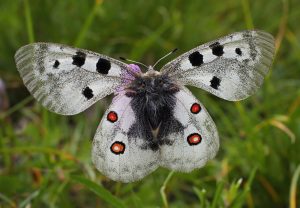
A species associated with the southern slopes with eroded, rocky areas with the occurrence of stonecrops. It is threatened by overgrowing of sites due to abandonment of grazing and secondary succession, as well as plantings of pines and other trees.
Clouded Apollo – Parnassius mnemosyne

(c) Pavol Kolárik
A species of mesophilic and drier grassland habitats and pastures on the edges of forests and forest meadows. It is threatened by the extinction of small forest meadows, overgrowth of forest edges with shrubs and planting of conifers.
Target habitats
6210* – Seminatural dry grasslands and scrubland facies on calcareous substrates (*Important orchid sites)
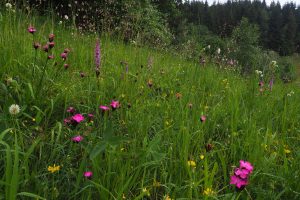
Very diverse communities with a dominance of thermophilic, xeromezophilic species of broadleaf grasses, sedges, perennial herbs, shrubs and semi-shrubs. Many localities are significant for the occurrence of species from the Orchidaceae family. In recent decades, these habitats have been gradually declining due to the cessation of traditional use, overgrown with shrubs, or monocultures of pines and other trees have been planted on them. Due to the great biodiversity of these communities, the occurrence of rare and biogeographically important species, it is necessary to maintain their sufficient representation and connectivity in the country. As relatively nutritious pastures, they are also of economic importance.
6240* – Sub-Pannonic steppic grasslands
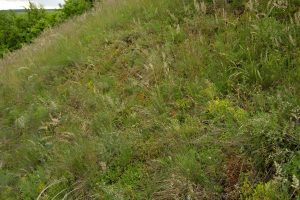
Xerophilic lawns with a predominance of narrow-leaved skeletons, perennial thermophilic herbs, shrubs, semi-shrubs and numerous spring-flowering terophytes. Typical steppe communities at the foot of the Carpathians and in Pannonia linked to drier and warmer areas or shallower and drier soils than communities of habitat type 6210 *. Due to the abandonment of grazing, secondary succession and planting of wood – often non-native black pine, habitats of these communities are gradually disappearing. They are a habitat for many rare species of plants and animals.
6190 – Rupicolous pannonic grasslands

Rocky steppe communities on limestones and especially dolomites with the occurrence of dealpine (mountain) plant species, as well as a representation of various endemic species. As less productive, rocky habitats have often been planted with Scots pine, black pine and manno ash, which has severely damaged many sites. This habitat is targeted in the project only in Hungary.
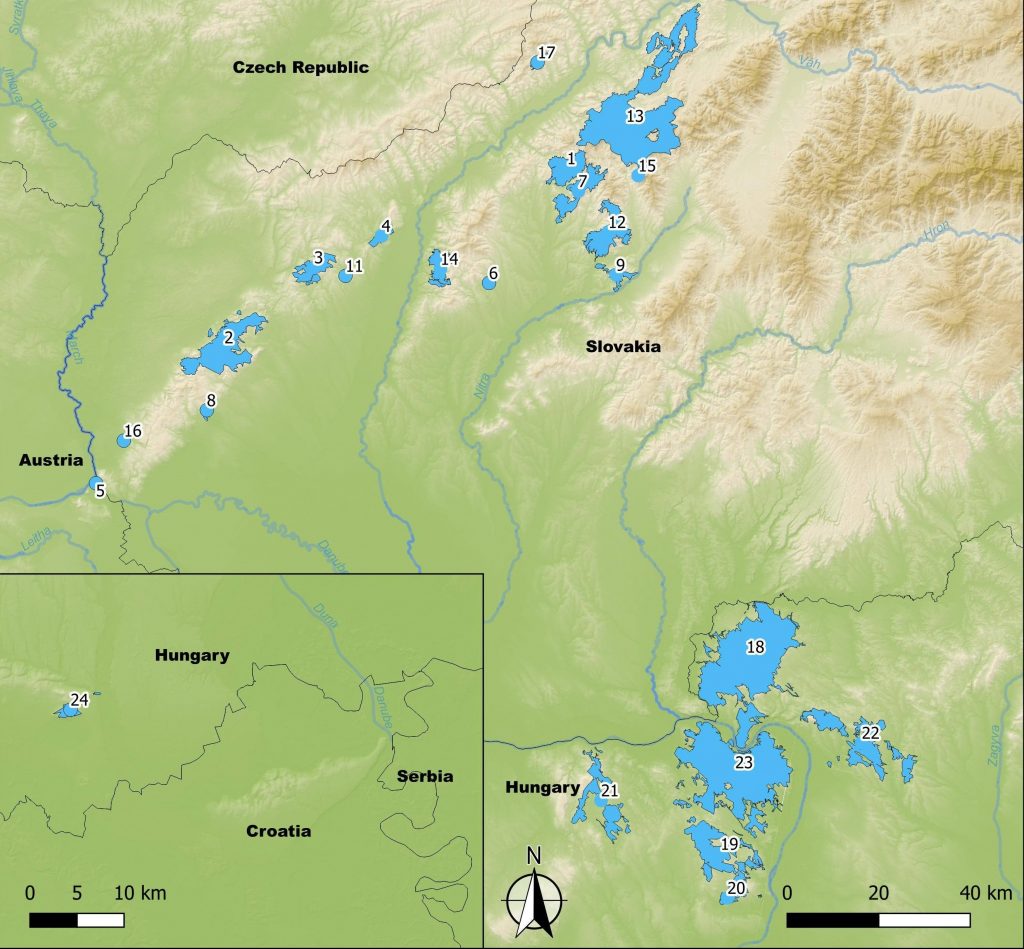
Activities:
A. Preparatory actions
A1 Expert study on the ecology and optimal management of Linum dolomiticum
A2 Expert study on restoration and long-term management of dry grassland habitats in Slovakia
A3 Obtaining technical documentation and necessary permissions for infrastructure for action C3
B. Purchase/lease of land and/or compensation payments for use rights
B1 Land purchase and long-term lease
C. Conservation actions
C1 Restoration management of target species and target habitats
C2 Reintroduction of extensive grazing
C3 Diverting the pressure of mass tourism and game from target species
C4 Propagation of target species on project sites
C5 Restoration of stepping stone habitats for target insect species
D. Monitoring of the impact of the project actions
D1 Monitoring of project impact on target species and habitats
D2 LIFE performance indicators monitoring
D3 Assessment of project impact on ecosystem services
D4 Assessment of projects socio-economic impacts and impact of dissemination actions
E. Public awareness and dissemination of results
E1 Awareness raising – public
E2 Awareness raising – key stakeholders
E3 Replication toolkit
E4 Networking and policies
E5 Developing of volunteer involvement
F. Project management
F1 Project management and reporting
F2 Project bookkeeping, financial management and auditing
F3 After-LIFE plan
On this page, you can study the summary of the project results after its midterm (December 31, 2023). In addition to the necessary preparatory, monitoring and administrative activities, we were also able to implement a number of specific conservation activities (activities C and E), which you can read about below and also in the articles on the project’s home page.
C.1 Restoration management of target species and target habitats
C.1.1 Selective removal of (non-native) tree plantations (Pinus nigra, P. sylvestris, Fraxinus ornus):
– the activity takes place mainly in the SCI Tematín and Strážovské vrchy, where a total of approximately 20 ha of rare steppe and pasture habitats have already been restored,
– the necessary preparatory work for this activity, which should be launched in the fall of 2024, is underway in Hungary.
C.1.2 Removal of undesirable shrubs and pioneer trees and restoration of grassland habitats
– in Slovakia, work has taken place and is still ongoing at more than 15 locations, primarily in the SCI Strážovské vrchy, Temešská skala, Baske, Omšenská baba, Vršatské bradlá and Brezovské Karpaty, together covering an area of more than 60 ha,
– in Hungary, this activity was carried out as part of activity E.5 with volunteers at the project sites of Budaörs, Pilis-tető and Nagy Szénás, so far on an area of approx. 15 ha.
C.1.3 Removal of invasive alien species:
– several important outbreaks of invasive trees were identified in Slovakia, which we have so far removed or injected on an area of almost 12 ha, especially at the project sites in the Little Carpathians. These were mainly individuals of the Ailanthus altissima, Robinia pseudoacacia and Fallopia japonica.
– in Hungary, the injection of invasive trees took place from June 2022 to October 2023, while it was possible to treat 39 ha in the two project areas of Rád and Budaörs.
C1.4 Planting of native trees on extreme dolomite habitats to create suitable microclimate and habitat conditions for *Linum dolomiticum:
– the activity is carried out annually by DINPD staff and started in October 2022, the measure should be successfully implemented by the expected end date.
C.2 Restoration of extensive grazing
– the total area of restored pasture in Slovakia is currently 84.5 ha, and we are preparing other sites (at least 104 ha) for pasture restoration in 2024,
– the success of this activity has a very positive effect on the target habitats, species and biodiversity as a whole. The restoration of pastures also brings high socio-economic benefits for local farmers, together with whom we restore pastures, and also improves awareness and a positive vision of nature protection and the European Union in rural communities,
– in Hungary, this action will start at the beginning of 2025, as it is first necessary to restore the target area (Rád project site) of unwanted bushes and dead wood material, which was previously treated as part of activity C1.3.
C.3 Diverting the pressure of mass tourism and game from target species
C3.1 Diverting the tourism pressure from *Ferula sadleriana:
– in Hungary, PP agreed with DINPD on the final plans in connection with the investment in the construction of the platform at the Pilis site. Public procurement for the construction should take place in early 2024.
C3.2 Diverting the tourism pressure from *Linum dolomiticum:
– in June 2023, a company was contracted to build a tourist shelter along the Szénások educational trail,
– in November 2023, a company was contracted for the comprehensive restoration of this educational trail.
C3.3 Diverting the pressure of game from target species in Hungary:
– this activity started with the field planning of the technical parameters of the future fencing at the Gerecse site. The necessary permission from the nature protection authority was obtained and accepted. The contracting of the company will take place in the summer of 2024 and the implementation will take place in the winter of 2024.
C3.4 Diverting pressure of game from Tephroseris longifolia ssp. moravica:
– enclosures for the protection of the endemic moravian Tephroseris were placed in the number of 70-90 at the locations of Vršatské bradlá and Omšenská Baba. Wild herbivores, whose numbers are enormously high today, would have a very negative effect on both populations without them.
C.4 Propagation of target species on project sites
– in Slovakia, the first planting areas of Teproseris longifolia subsp. moravica were established at locations in the Vršatské bradlá and Omšenská baba ÚEUs,
– in Hungary, an external expert was contracted for the sowing of the target species Linum dolomiticum, Vincetoxicum pannonicum, Crambe tataria and Ferula sadleriana until 2026. The first research report was submitted in December 2023 and the first sowing of plants is expected in 2024.
C.5 Restoration of stepping stone habitats for target insects species
– for the possible implementation of this action, many suitable locations were identified during the first years of the project by the project team as well as by experts during the preparation of the study (A.2). Due to the low budget of this event, we are choosing locations with the highest conservation values for the realization of this activity,
– for the protection of the clouded apollo, we have so far restored approx. 2.5 ha of stepping stones in the Molpír, Horná Pustá Ves and Krasín locations, for the mountain apollo approx. 1.8 ha in Klapy and Babiná, and for the large blue 0.3 ha in Rajecká dolina and Beckovské skalicie.
A. Preparatory actions, elaboration of management plans and/or of action plans
A.1: Expert study on ecology and optimal management of Linum dolomiticum (Hungary):
– DINPI assembled a team of experts from scientific institutions who are investigating the specific requirements of this extremely rare and sensitive species, so that subsequent activities to stop the decline of its population are as effective as possible,
– a team of experts prepared recommendations based on which DINPI purchased LIDAR layers for the entire habitat of L. dolomiticum and contracted a coenological expert in 2023,
– during the entire project, DINPI prepares an annual report on the state of protection of L. dolomiticum, which provides regular data for the work of the expert team.
A.2: Expert study on restoration and long-term management of dry grassland habitats in Slovakia:
– the study is complete, it describes in detail the priority locations and the appropriate management for their restoration within the project areas in Slovakia,
– in addition to them, the study also contains a list of stepping stones, as well as three territories outside the project territories (ÚEV Hrehorkové, Závlačná and Drietomské bradlo), which are extremely suitable for the implementation of project activities C.1 and C.2, and therefore we requested their addition to the project.
A.3: Obtaining technical documentation and necessary permissions for infrastructure for action C.3 (Hungary):
– all necessary permits have been obtained,
– part of the preparations included obtaining official permits for the implementation of field work related to the restoration of habitats, which we also managed to obtain and are proceeding in accordance with the requirements of the nature protection authorities.
B: Purchase/lease of land and/or compensation payments for use rights
– DINPI in Hungary purchased 14.7 ha of land suitable for project activities, thus fulfilling the project’s goal,
– in Slovakia, the lease of land in the SCI Dolné Lazy and Vršatské bradlá was successfully completed, where we are also carrying out project activities C.1 and C.2, and at the same time negotiations are underway with land owners about possible purchases and leases at other locations.
D: Monitoring of impact of the project actions
D.1 Monitoring of project impact on target species and habitats:
– experts were contracted and all planned project monitoring takes place on selected restored areas, or areas planned for restoration.
D.2 LIFE performance indicators monitoring:
– LPI monitoring is carried out regularly from the beginning of the project.
D.3 Assessment of project impact on ecosystem service:
– we procured and contracted an external provider of this monitoring. The initial mapping and evaluation of the current state of ecosystems and their services was carried out.
D.4 Assessment of projects socio-economic impacts and impact of dissemination actions:
– we procured and contracted an external provider for monitoring and evaluating the impact of project activities. The design of expert interviews and online questionnaires for various target public groups were discussed and agreed in spring 2022, with the data collection period running until August 2022,
– the mid-term report was completed in May 2023.
E. Public awareness and dissemination of results
E.1 Public awareness raising:
– we created a communication plan for the project, which is regularly updated according to current needs, and we launched a project website, which is regularly updated, the project results are also communicated through the social media of the project partners,
– more than 30 articles were published about the project in online and print media,
– 10 information panels in Slovakia and 8 in Hungary were placed on the restored areas,
– we prepared and distributed the first batch of promotional materials about the project,
– we have implemented several excursions for the local public and students, and we are still planning more.
E.2 Awareness raising – key stakeholders:
– we held dozens of personal meetings with local farmers and land owners,
– we organized field seminars on the removal of invasive trees with foresters and state conservationists.
E.3 Replication toolkits:
– we selected groups of experts and contact persons to provide information and spread good practice for management beneficial to the restoration of non-forest habitats,
– consultations were held with 5 entities, which subsequently implemented activities similar to those of the project in other territories in Slovakia (Kysuce, Ponitrie) under their own direction.
E.4 Networking and policies:
– we held a number of meetings with similarly focused organizations,
– we co-organized the campaign For a living landscape, which led to a better setting of the rules of the Common Agricultural Policy for 2023-2027 in Slovakia,
– we were involved in setting up forest management plans in the project areas in order to improve the possibilities of protecting the target habitats and we participated in the expansion of the Natura 2000 area network.
E.5 Developing of volunteer involvement:
– in Slovakia, we organized more than 25 volunteer events, focused on various conservation activities (mowing, raking, removing branches), we explained to the participants the importance of active care for rare non-forest habotats,
– we organized the international protection mission Apollo 11, in which more than 70 volunteers from Slovakia, Czech Republic and France took part in SCI Vršatské bradlá and its surroundings,
– the Hungarian partners organized 15 volunteer activities, with a total of more than 800 volunteers involved in both countries.
F. Project management
– the project team has been fully assembled and is working efficiently to fulfill the project activities.

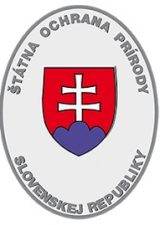
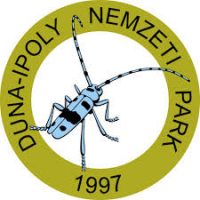
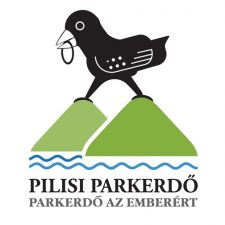
For more information about project species, habitats, but also about means of their protection and management, eventually, if you plan to do something similar on other sites, you can consult with our colleagues:
Mário Duchoň, duchon@broz.sk, tel. number: 0915 165 677
Pavol Littera, littera@broz.sk, tel. number: 0948 177 555





